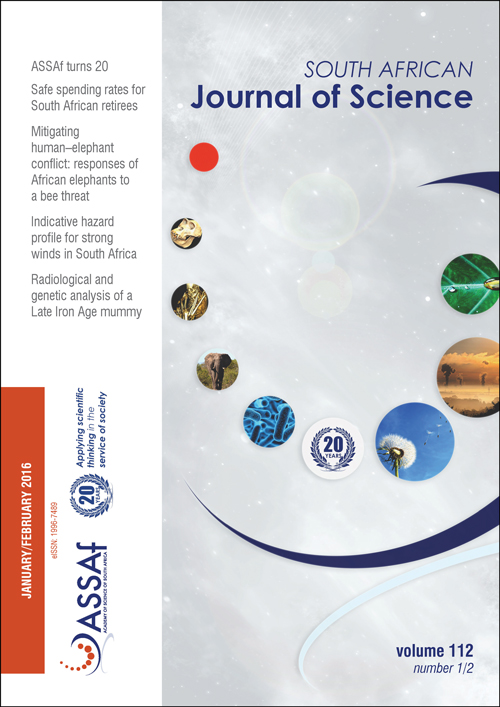Radiological and genetic analysis of a Late Iron Age mummy from the Tuli Block, Botswana
DOI:
https://doi.org/10.17159/sajs.2016/20150139Keywords:
aDNA, computerised tomography, mummified remains, population relationships, southern AfricaAbstract
Mummified human remains are valuable sources of information on past populations. Here we report on the radiological and molecular findings of a partially mummified individual found in northern Botswana. This desiccated mummy from the Tuli region is the first to have been reported from this region. The remains were those of an older male adult of African origin. He was interred in a tightly flexed position and wrapped in an animal skin. Computerised tomography (CT) scanning revealed that none of the internal organs was preserved. Multiple post-mortem alterations are seen, but apart from some degenerative changes of the lower vertebral column, the axial skeleton has remained intact. The advanced osteophytosis suggests an older age than what was previously estimated. The aDNA analysis confirms Sotho–Tswana and possibly Khoesan genetic relatedness, as could be expected from individuals from that region. These results represent one of the first CT scans of a mummified individual from southern Africa, and also the first successful aDNA extraction from such remains.Published
2016-02-01
Issue
Section
Research Article
License

All articles are published under a Creative Commons Attribution 4.0 International Licence
Copyright is retained by the authors. Readers are welcome to reproduce, share and adapt the content without permission provided the source is attributed.
Disclaimer: The publisher and editors accept no responsibility for statements made by the authors
How to Cite
Rühli, F. J., Steyn, M., Mosothwane, M. N., Öhrström, L., Bodiba, M. K., & Bouwman, A. (2016). Radiological and genetic analysis of a Late Iron Age mummy from the Tuli Block, Botswana. South African Journal of Science, 112(1/2), 7. https://doi.org/10.17159/sajs.2016/20150139
Views
- Abstract 701
- PDF 555
- EPUB 195
- XML 219













.png)